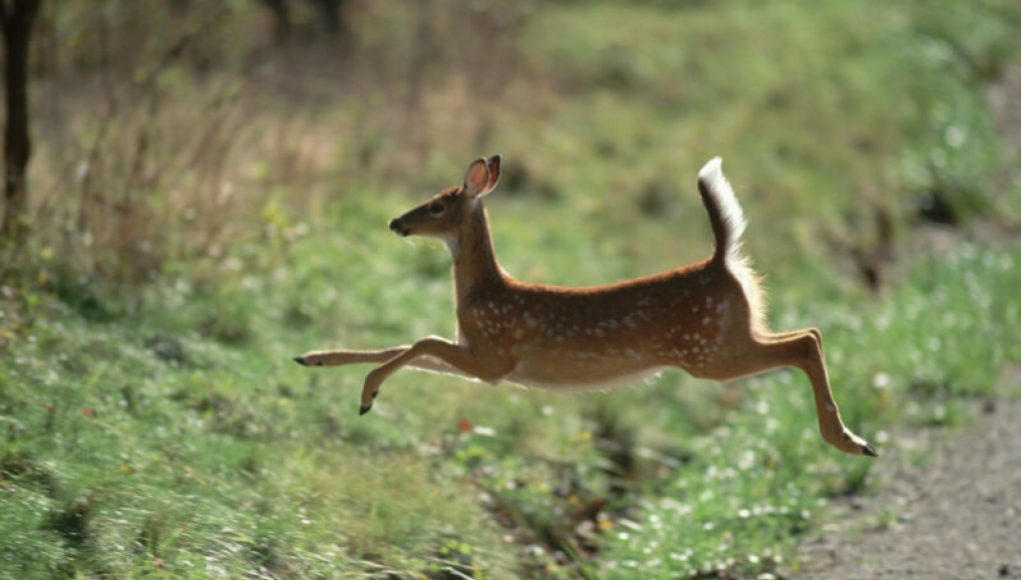Did you know that white-tailed deer in the US have been transmitting the coronavirus to each other? In fact, a large government-led study found that a third of the deer tested showed signs of prior infection. But it doesn’t stop there. The study also suggests that these deer have been giving the virus back to humans at least three times. Talk about a vicious cycle!
The US Department of Agriculture recently announced these findings, which align with previous research indicating that white-tailed deer can easily contract the virus from humans and pass it on to their fellow deer. There was even a case in Canada where a deer transmitted the virus back to a human. This new study, led by the USDA’s Animal and Plant Health Inspection Service (APHIS), provides a more comprehensive understanding of how the virus spreads among deer in the US. It raises concerns that these deer could potentially serve as a reservoir for the virus, meaning they can acquire and harbor different strains of the virus and pass them back to humans, leading to new waves of infection. It’s a worrisome scenario, as these new strains could potentially evade our immune defenses developed through previous infections and vaccinations.
“Deer regularly interact with humans and are commonly found in human environments—near our homes, pets, wastewater, and trash,” explained Dr. Xiu-Feng “Henry” Wan, an expert in emerging infectious diseases at the University of Missouri who led some of the research. “The potential for SARS-CoV-2, or any zoonotic disease, to persist and evolve in wildlife populations can pose unique public health risks.”
Advertisement
Between late 2021 and 2022, the USDA, along with researchers and state partners, conducted a survey involving over 11,000 white-tailed deer from 26 states and Washington, DC. Shockingly, 31.6 percent of these deer had antibodies indicating a previous infection with SARS-CoV-2, and 12.2 percent had detectable virus in their systems.
As part of the study, researchers collected around 9,000 respiratory samples from deer in 26 states and Washington, DC, between late 2021 and early 2022. They then analyzed the viral genomes of nearly 400 SARS-CoV-2 viruses isolated from these samples. The genetic analysis revealed at least 109 instances where the virus had spilled over from humans to deer, with evidence of further transmission among the deer population. The viruses found in the deer belonged to various variants circulating in humans, including Alpha, Gamma, Delta, and Omicron. Interestingly, the genetic data also showed changes specific to the SARS-CoV-2 viruses as they moved from deer to deer.
What’s even more alarming is that the genetic data indicated three instances where deer-adapted SARS-CoV-2 viruses had spilled back over to humans. Two cases were identified in North Carolina, and one in Massachusetts. When comparing the viral sequences from these cases to those isolated from deer in the corresponding states, they were found to be over 99.9 percent identical. These findings were published in Nature Communications by Dr. Wan and his colleagues.
Since collecting and analyzing this data, APHIS has expanded its surveillance of SARS-CoV-2 in deer. While there is currently no evidence suggesting that deer play a significant role in the transmission of the virus, the potential for them to act as a reservoir is still a concern. There are still many unknowns that researchers will be working to uncover, such as the exact mechanisms of transmission between deer and humans.
According to recent findings, a shocking one-third of American deer have contracted coronavirus. This new discovery has left many wondering if the virus is able to be transmitted from deer to humans.
A recent study out of the University of Georgia has confirmed that a third of US deer tested now carry the virus. The study, conducted across six different US states, tested a total of 785 wild deer for antibodies of the virus, revealing that 263 of those tested had been exposed to the virus.
The study further reveals that not all of the deer tested had active coronavirus infection. Antibodies indicate that they may have contracted the virus, and it is possible that they could become infected in the future.
Fortunately, the number of deer-to-human transmissions of the virus currently remains low. However, there have been multiple occasions in which the virus has transmitted from deer to humans. The key factor in these cases was close contact to the deer, such as feeding them, petting them, or trapping them.
In addition, the study also notes that the virus remains present in the saliva and mucous membrane of infected deer, meaning that humans that come into contact with these fluids are at risk of becoming infected.
At this point in time, it is uncertain how widespread the virus is among deer, as the study only investigated six states. Therefore, it is important for people to practice social distancing while in the outdoors and to be careful when interacting with wild animals. Doing so could reduce the chances of the virus infecting human populations.
It is evident that this virus is now able to transmit from deer to humans in certain scenarios. As such, it is important that we use caution when interacting with wild animals so as to prevent further transmission of the virus.




















